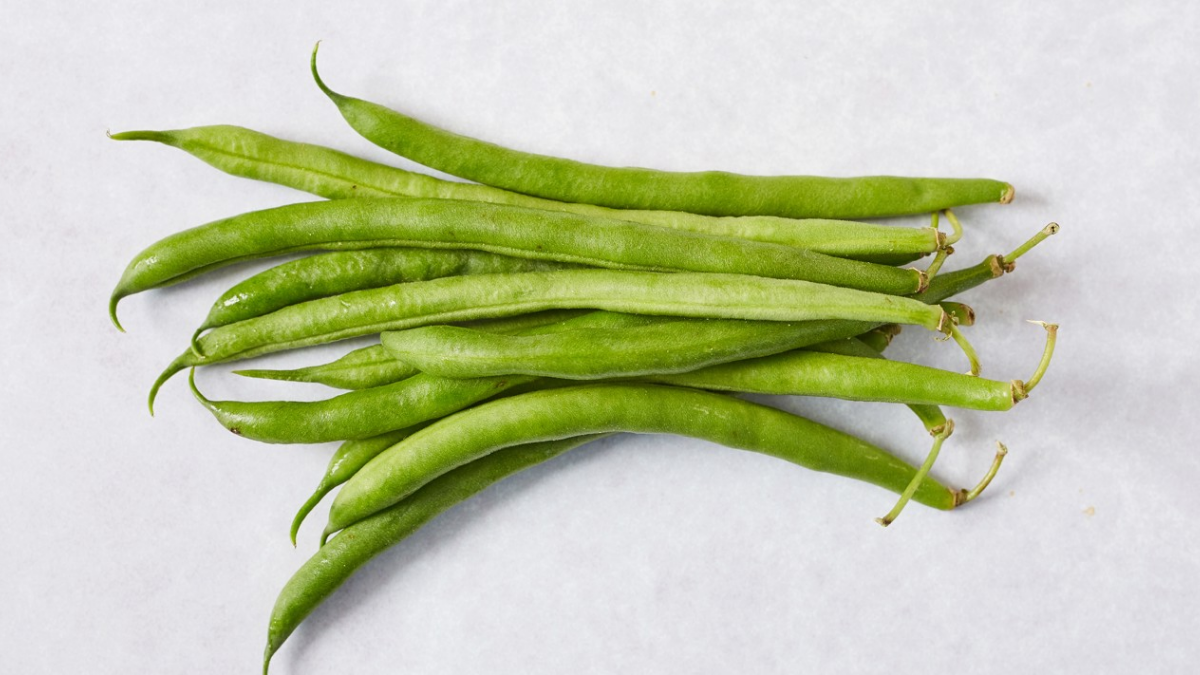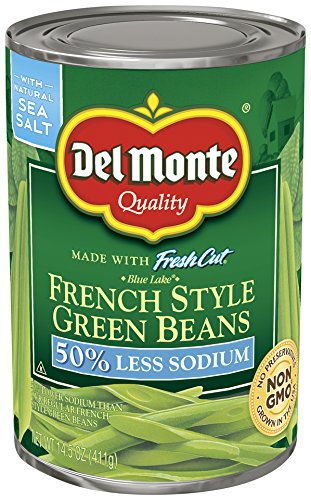Green beans are cholesterol-free. Although your body needs a certain amount of cholesterol for proper cell growth, too much is harmful. High cholesterol can cause fat deposits to form in your arteries, triggering a heart attack or stroke by reducing blood flow to your heart and brain.
Your blood pressure may rise if you consume too much sodium in your diet. A higher risk of heart disease and stroke are linked to high blood pressure. However, canned green beans should be avoided. Green beans contain 6 mg of sodium per 100 grams serving. Choose no-salt-added green beans or rinse canned green beans before eating.
Green beans are marketed as fresh, tinned, and frozen and are enjoyed worldwide. Raw, steamed, boiled, stir-fried, or baked are all options. Soups, stews, and casseroles are just a few ways they’re used. Green beans, like cucumbers, can also be pickled. Green bean casserole, a dish of green beans, cream of mushroom soup, and French-fried onions, is a popular green bean dish in the northern United States, especially at Thanksgiving.
Green beans battered and fried, such as green bean tempura, are served at some US restaurants. Coo, a popular meal, is made entirely of bean seeds that have been separated from their pods. Green beans are frequently sold as vegetable chips, either dried or fried with vegetables like carrots, maize, and peas.
Green Beans Nutrition Facts
Green beans are abundant in vitamin K and calcium, and they are a good source of both. These nutrients are necessary for keeping strong, healthy bones and lowering the risk of fractures. It’s not just crucial to get adequate folate during pregnancy; and the B vitamin is also beneficial in preventing depression. Green beans are high in fiber, a beneficial food for various reasons. Soluble fiber, in particular, has been shown to promote heart health by reducing LDL cholesterol. Green beans are high in fiber, which keeps your digestive tract healthy and working smoothly.
Is Eating Green Beans Healthy?
Because of their low calorie and fat content, green beans are a healthy complement to practically any diet. They’re also nutrient-dense since they’re high in vitamins, minerals, and antioxidants, and the nutrients they contain provide a variety of health benefits.
Some of the health benefits of green beans include:
High In Antioxidants
Green beans are high in antioxidants such as vitamin C, flavonols, quercetin, and kaempferol, which help repair cell damage. These antioxidants help the body combat free radicals, decrease cell damage, and support standard cell structure, development, and function.
Reduce The Risk Of Heart Disease
Flavonoids may help reduce the risk of heart disease and improve heart health by lowering low-density lipoprotein (LDL) cholesterol levels (bad cholesterol). Green beans may assist in preventing thrombotic disorders of the heart, such as blood clots in the arteries and veins, by including them in the diet.
Green Beans Include Fiber
which helps to keep the digestive system healthy and running smoothly. Green beans are also low in fermentable oligo-, di-, mono-, and polysaccharides and polyols (FODMAP), a carbohydrate linked to gastrointestinal issues like irritable bowel syndrome. Green beans can assist in alleviating the symptoms of digestive problems.
Green Beans Include Folate
which is essential for the growth and development of unborn fetuses. This vitamin can also help to prevent specific birth abnormalities.
Calcium And Vitamin
Green beans provide a good quantity of calcium and vitamin K, which are essential for keeping strong, healthy bones and minimizing the incidence of fractures.
Reduce Homocysteine Levels
Reduce homocysteine levels and interfere with the natural production of serotonin, dopamine, and norepinephrine that regulate mood: Folates in green beans reduce homocysteine levels and interfere with the natural production of serotonin and dopamine and norepinephrine that regulate mood.
French Style Green Beans
Varieties Of Green Beans
- Various names are known as Green beans, including string beans, French beans, and snap beans. They’re also available in colors other than green (like purple or yellow). These beans have a similar taste and nutrients and may be used in various cuisines.
- Green beans in a can are just as healthful as raw beans but read the label carefully because many manufacturers add sodium. A cup of canned beans could have more than 500 mg of sodium. 12 (However, you can lower your sodium intake by washing the beans before eating them.)
- Many people who prefer green beans dislike the canned variety’s softer texture. Fresh green beans are noted for their vibrant green color, but canned green beans are less likely to have it. On the other hand, plain frozen beans maintain the color and nutrition of fresh beans (sauced or seasoned frozen beans contain additional ingredients that may add calories, fat, or sodium).
How To Store Green Beans?
Green beans can be stored in the refrigerator in a plastic bag or resealable container for up to a week if they are kept cool. Do not wash or trim the beans until you are ready to use them because cutting the beans can lead them to spoil more quickly than usual.
If you want to freeze green beans, boil them first before putting them in the freezer. Gently blanch the vegetables, then pat them dry. Pour into an airtight plastic bag and freeze for several hours in a single layer on a sheet pan. Frozen green beans have a shelf life of three to six months if stored correctly.
How To Prepare Green Beans For Cooking?
The quickest and most straightforward method of preparing green beans is to boil or steam them. To prepare the beans, thoroughly rinse them and trim the ends. In a pot of boiling salted water or in a steamer, cook the vegetables until tender—Cook for approximately five minutes, or until the vegetables are brilliant green. Remove from the fire and season with lemon juice, olive oil, or salt to your liking. Green beans can also be added to a favorite meal or tossed into a salad, spaghetti, or stir-fry to make it more interesting.
Is It True That Green Beans Are Beneficial To Your Immune System?
Vitamin C is also abundant in raw green beans. One hundred grams has 27%, about a quarter of the daily recommended dose. Vitamin C is an antioxidant that aids in the immune system’s function. It’s also necessary for collagen formation and protects your skin from oxidative stress Broccoli is a good source of calcium and vitamin K. Although green beans have more alpha-carotene than broccoli, broccoli has more lute zeaxanthin. Vitamin C, dietary fiber, and potassium are abundant in green beans and broccoli, and broccoli has a higher level of pantothenic acid. While some recipes call for raw green beans, the lectin concentration of raw green beans can cause nausea, diarrhea, bloating, and vomiting. As a result, it’s advised to stay away from uncooked green beans.
Are Green Beans Good For Kidney Patients?
100 grams of green beans have only 209 milligrams of potassium, making them an excellent kidney-friendly food. Kale, spinach, chard, and collard greens are high in vitamins A and C, calcium, and other minerals. Carotenoids, flavonoids, and vitamin K are also abundant in kale Cucumbers are often regarded as the best kidney cleaner available. This is because they aid in removing dirt and stones from the kidneys and bladder. Cucumbers have been demonstrated in studies to help manage uric acid levels in the body, reducing the risk of kidney and bladder stones. Cooking removes the lectins while improving the flavor, digestibility, and antioxidant content.
Do Green Beans Help You Lose Weight?
Beans are possibly one of the most weight-loss-friendly foods available. They’re heavy in protein and fiber but low in calories. Two of the essential nutrients for weight loss are protein and fiber. According to one study, those who ate a high-fiber diet that included beans felt less hungry. Beans are one of the healthiest foods you can eat, but they’re perfect for losing belly fat since they’re high in soluble fiber, which fights the inflammation that causes belly fat to accumulate. Bean eating has been associated with a lower risk of obesity in some studies. Beans and other legumes can aid weight loss. Lentils, black beans, kidney beans, and other legumes. Those foods are abundant in protein and fiber, two elements that help you feel full. They also have a lot of resistant starch in them.
Conclusion
Although immature or young pods of the runner bean, yardlong bean, and hyacinth bean are used similarly, green beans are young, unripe fruits of several common bean cultivars. French beans (or haricot vert in French), string beans (although most current kinds are), and snap beans (or snaps) are all frequent names for green beans. To distinguish them from yardlong beans, they are also known as Baguio beans or habichuelas in the Philippines.
Green beans differ from other bean kinds in that they are picked and eaten along with their enclosing pods before the bean seeds inside have fully grown—harvesting and eating unripened pea pods, such as snow peas or sugar snap peas.




